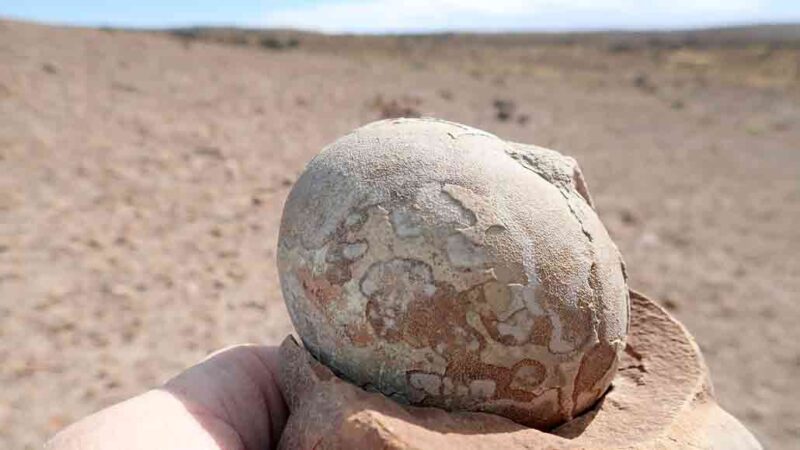A treasure trove of fossilized eggs, nests and skeletons represents the earliest evidence yet of dinosaurs traveling in herds, a study finds.
The newly unearthed egg clutches were found alongside the skeletal remains of dozens of newborn, juvenile and adult dinosaurs, suggesting the creatures stayed together throughout their lives. At about 193 million years old, the finds displace the previous oldest evidence of herd behavior in dinosaurs by at least 40 million years, researchers report October 21 in Scientific Reports.
In southern Argentina, paleontologist Diego Pol of the Museo Paleontológico Egidio Feruglio in Trelew, Argentina, and colleagues found 80 individuals and over 100 eggs, all of the early sauropod ancestor Mussaurus patagonicus. Nests consisted of eight to 30 eggs, and analyses of five nests revealed that in each, the eggs were arranged in two or three layers within shallow trenches. Analyses of some skeletons revealed a diverse array of ages: At least 11 were hatchlings less than a year old, two were adults and nine were juveniles.
 This fossilized Mussaurus patagonicus egg, which dates to about 193 million years ago, was found in arid southern Patagonia in Argentina. The discovery of fossil egg clutches and an age-diverse array of individuals at the site may represent the oldest evidence that some dinosaurs traveled in herds.Roger Smith
This fossilized Mussaurus patagonicus egg, which dates to about 193 million years ago, was found in arid southern Patagonia in Argentina. The discovery of fossil egg clutches and an age-diverse array of individuals at the site may represent the oldest evidence that some dinosaurs traveled in herds.Roger Smith
Fossils of the first known dinosaurs, including sauropodomorphs — relatively diminutive ancestors of long-necked behemoth sauropods such as Dreadnoughtus schrani — date to around 245 million years ago (SN: 9/4/14). By the end of the Triassic Period, about 201 million years ago, sauropodomorphs, including Mussaurus, had become among the most abundant plant eaters on land. Mussaurus roamed in what’s now Patagonia’s deserts (SN: 5/20/19). The dinosaurs built the newly unearthed nests when the area was semi-arid, near a lake that may have periodically flooded and evaporated. A sudden flood may explain the dinosaurs’ demise.
Mind-bogglingly massive sauropods didn’t arise until the Jurassic Period, which followed the Triassic. But fossils of Triassic sauropodomorphs like Mussaurus were already showing evidence of a growth spurt. The increased energy demands of larger bodies, the researchers suggest, may have required these creatures to coordinate their efforts, forming herds to forage across long distances.

Sign Up For the Latest from Science News
Headlines and summaries of the latest Science News articles, delivered to your inbox
Client key* E-mail Address* Go
Thank you for signing up!
There was a problem signing you up.

